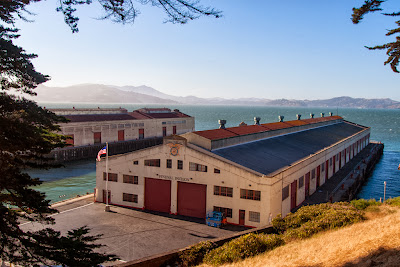I
posted a couple of days ago about the highlights of my purchases at the
fall Big Book Sale. Hopefully you're not TOO bored with hearing about the book sale yet, as this is a sort of
sequel, to show you a few odds and ends I also picked up.
Inevitably,
at every book sale I come across a few books that I know little or nothing
about but which are nevertheless seductive in some strange way and leave me no
choice but to bring them home. Sometimes
they turn out to be exciting finds, and sometimes I end up donating them back
to the library. But hey, it's all for a
good cause.
This year,
I wound up with three of these.
The
first is by Elisabeth Ogilvie, and I knew her name was familiar but couldn't
recall who she was. It turns out that
she's an American writer I was familiar with from recommendations of her Tide
trilogy, set in Maine. At any rate, I
probably couldn't have resisted the cheesy cover:
Though
you have to admit the one above is less cheesy than another edition of the
book:
Then
there was a book called Someday I'll Find
You, by Margaret Widdemer, a writer I hadn't come across before who also
turns out to be American. It also turns out that Fleur Fisher recently wrote enthusiastically about one of Widdemer's early novels, The Rose-Garden Husband, which gives me more hope for this book than I would have had based on the cover. But regardless of
whatever other glowing qualities the book could turn out to possess, I don't think
I could ever have resisted a caption
like this: "The modern story of a young girl who experimented with men,
women and jobs, and got what wasn't coming to her."
The
mind boggles.
I was also
interested in the back cover, which advertises other titles in the
"Triangle Books" series. Apart
from the perky and easily pleased people portrayed at the top, the list of
titles and authors is tantalizing. A few
of the women writers, such as Bess Streeter Aldrich and Mary Roberts Rinehart,
are familiar. But my obsession with
tracking down obscure writers makes me perversely intrigued by the likes of
Judith Kelly's Marriage Is a Private
Affair, Faith Baldwin's Office Wife,
and Helen Topping Miller's Song After
Midnight. Now, these might not sound
like masterpieces, but I would note that I have a copy of Margery Sharp's wonderful
and hilarious The Stone of Chastity
that was published in the similar, mainstream, low-cost Tower Books series, so I am keeping an open mind!
In
addition, this advertisement reveals why I was never able to find
information about Maisie Grieg, a romance writer I added to my list recently, who sounded rather charming based
on one contemporary review I came across. It
turns out that that was because the Sydney
Morning Herald, wherein I found the review, completely butchered her name,
which is actually Maysie Greig.
Sadly, although I can now find information about her, and she does seem to have potential to be a highly enjoyable writer, I also
have to remove her from my list, since it turns out she was definitively
Australian. Although I have met many lovely Australians and hope someday to
add their many great writers to my list, for now I am quite overwhelmed enough
by the Brits!
And
finally, I was completely and irrationally seduced by this cover:
At
least it turns out that the poetically-named Lane is indeed British (a new name
for my list!). She seems, at a quick
glance, to have been a prolific writer of historical novels, many with Catholic
themes, and the present title, according to Wikipedia, deals with "Titus
Oakes and the 'Popish Plot.'" I
probably should know what that is, but alas I do not. Drat the American education system!
I also
picked up a relatively nice copy of Madeleine Henrey's Madeleine Grown Up. Henrey was born and raised in France, so she doesn't quite fit my list, but she is still of interest and spent most of her life in the U.K. and wrote extensively about her life there. Oddly, she wrote most of her books under her husband's name (Robert
Henrey), though apparently she was actually the sole author. Her works included several memoirs of life in
London and in other locales during World War II.
The next one was sort of an odd one for me to pick up. I've never even read Rebecca of Sunnybrook Farm, but for some reason I picked up a cute little copy of Kate Douglas Wiggin's earlier book, The Village Watch Tower, which some optimistic (or perhaps unscrupulous?) bookseller identified as a first edition inside the front cover. I'm skeptical. But does anyone know anything about the book? Is this just a re-donation?
Beyond
these, I picked up the last two volumes of Evelyn Waugh's WWII
trilogy, which so many people have recommended to me. I got volume 1, Men at Arms, a couple of months ago—and
still haven't read it—but at $3 per volume for really nice little hardcover
editions, I couldn't resist fleshing out the trilogy with Officers and Gentleman and The
End of the Battle (aka Unconditional
Surrender).
And I
grabbed an Iain Pears mystery, Death and
Restoration, for some brain candy.




.jpg)














.jpg)




.jpg)

.jpg)

+by+Stephen+Bone.jpg)

